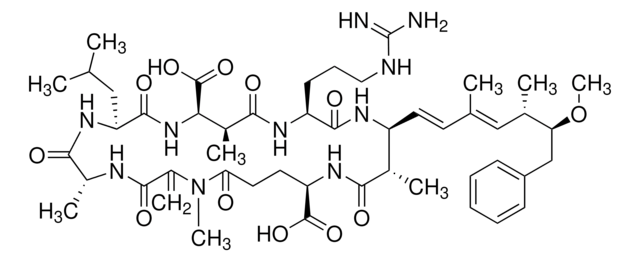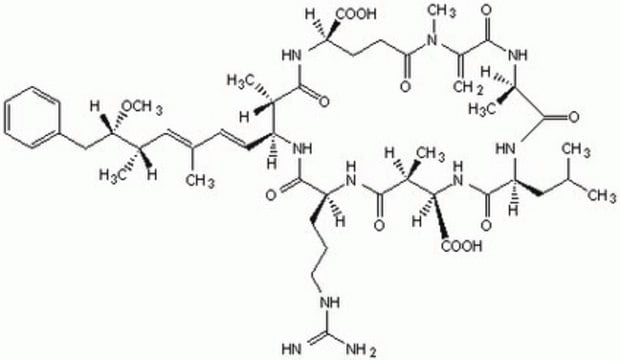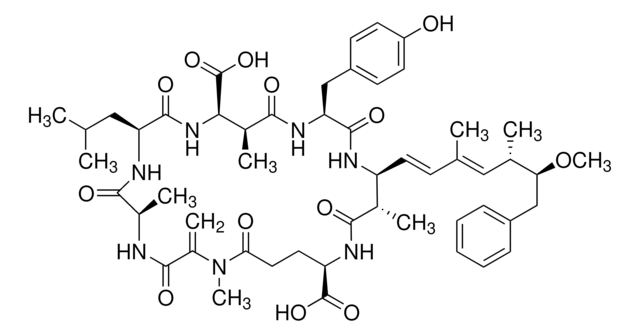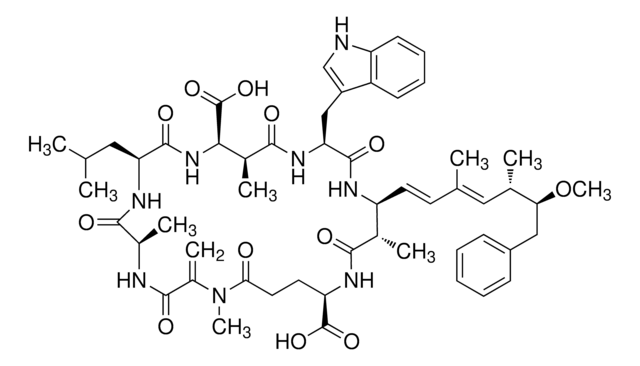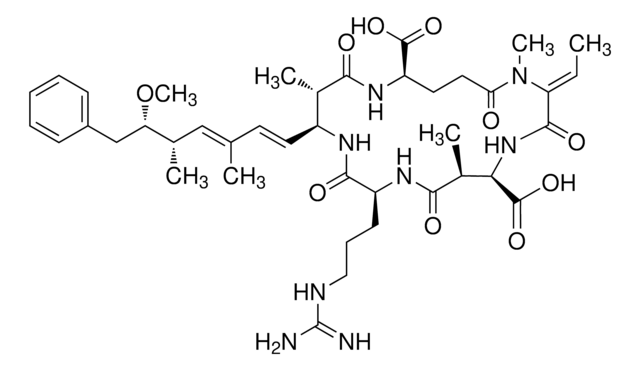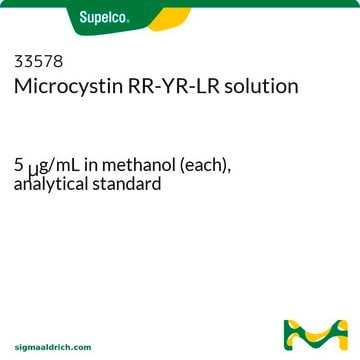M4069
Microcystin YR from Microcystis aeruginosa
cyanotoxin
About This Item
Recommended Products
biological source
microbial (Microcystis aerguinosa)
Quality Level
assay
≥90% (HPLC)
form
powder
mol wt
~1.0 kDa
color
white
solubility
methanol: 2 mg/mL ((further dilute to 10% (v/v) methanol))
DMSO: soluble
ethanol: soluble
storage temp.
−20°C
SMILES string
CO[C@@H](Cc1ccccc1)[C@@H](C)\C=C(C)\C=C\[C@@H]2NC(=O)[C@H](CCCNC(N)=N)NC(=O)[C@H](C)[C@@H](NC(=O)[C@H](Cc3ccc(O)cc3)NC(=O)[C@@H](C)NC(=O)C(=C)N(C)C(=O)CC[C@@H](NC(=O)[C@H]2C)C(O)=O)C(O)=O
InChI
1S/C52H72N10O13/c1-28(25-29(2)41(75-8)27-34-13-10-9-11-14-34)16-21-37-30(3)44(65)59-39(50(71)72)22-23-42(64)62(7)33(6)47(68)56-32(5)46(67)60-40(26-35-17-19-36(63)20-18-35)49(70)61-43(51(73)74)31(4)45(66)58-38(48(69)57-37)15-12-24-55-52(53)54/h9-11,13-14,16-21,25,29-32,37-41,43,63H,6,12,15,22-24,26-27H2,1-5,7-8H3,(H,56,68)(H,57,69)(H,58,66)(H,59,65)(H,60,67)(H,61,70)(H,71,72)(H,73,74)(H4,53,54,55)/b21-16+,28-25+/t29-,30-,31+,32+,37-,38-,39+,40-,41-,43+/m0/s1
InChI key
OWHASZQTEFAUJC-HVUCWAFBSA-N
General description
Application
Biochem/physiol Actions
signalword
Danger
Hazard Classifications
Acute Tox. 1 Inhalation - Acute Tox. 2 Dermal - Acute Tox. 2 Oral - Eye Irrit. 2 - Skin Irrit. 2 - Skin Sens. 1 - STOT SE 3
target_organs
Respiratory system
Storage Class
6.1A - Combustible acute toxic Cat. 1 and 2 / very toxic hazardous materials
wgk_germany
WGK 3
flash_point_f
Not applicable
flash_point_c
Not applicable
ppe
Eyeshields, Faceshields, Gloves, type P3 (EN 143) respirator cartridges
Choose from one of the most recent versions:
Already Own This Product?
Find documentation for the products that you have recently purchased in the Document Library.
Our team of scientists has experience in all areas of research including Life Science, Material Science, Chemical Synthesis, Chromatography, Analytical and many others.
Contact Technical Service
